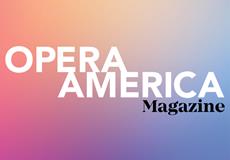The Clown Stands Alone
A spate of standalone Pagliaccis shows that audiences welcome short evenings at the opera.
Pagliacci and Cavalleria Rusticana were both new works in 1893, when they were first performed together at the Teatro Costanzi in Rome. The pairing stuck: The Metropolitan Opera took it up later that year, and for most of their history, the two 75-minute verismo operas have routinely formed a double bill, known in operatic shorthand as “Cav and Pag.” But in recent years, American opera companies have increasingly mounted Pagliacci shorn of its mate — and found that it works just fine on its own.
“Why do Pagliacci alone?” asks Esther Nelson, general and artistic director of Boston Lyric Opera. “An equally interesting question is: Why were they coupled in the first place?”
The spate of standalone Pagliaccis — like the one that BLO will offer this fall — isn’t due to sheer happenstance. Instead, it speaks to the current exigencies of opera production, and to rapid changes in audience taste. For many years, companies felt compelled to produce shows that were lavish not only in production values and performing forces, but also in length. Nelson points out that the Metropolitan Opera, which has given “Cav” with “Pag” more often than not, has historically relied on subscriptions to sell tickets: a model that depends on “the idea of operas of equal value.” While Cavalleria and Pagliacci, performed in tandem, offered a perceived value commensurate with other operas in a subscription bundle, each on its own might in the past have seemed too stingy an offering. Even Salome, which now is considered a sufficiently ample night at the theater, was until the 1960s routinely given as part of a double bill at the Met — sometimes paired with Pagliacci.
But for today’s audiences, a short evening does not necessarily offer short value; instead, many audience members actively welcome the idea of keeping things brief. Some independent opera companies, like New York’s Heartbeat Opera, offer abridged, intermission-less adaptations of standard repertoire. Contemporary operas, like Gregory Spears and Kathryn Walat’s Paul’s Case and Missy Mazzoli and Royce Vavrek’s Proving Up, quite often clock in under the 90-minute mark.
The phenomenon is in part a response to the seismic shifts in the way we now consume entertainment. “Attention spans are shorter,” says Roger Weitz, general director of Opera Omaha, which presented a standalone Pagliacci last season. “The onslaught of media means that people have the ability to get what they want on demand, when they want it. They want the range of options they have at home with their remote controls, rather than being limited to going to a large venue and being held captive for a three-hour performance.”
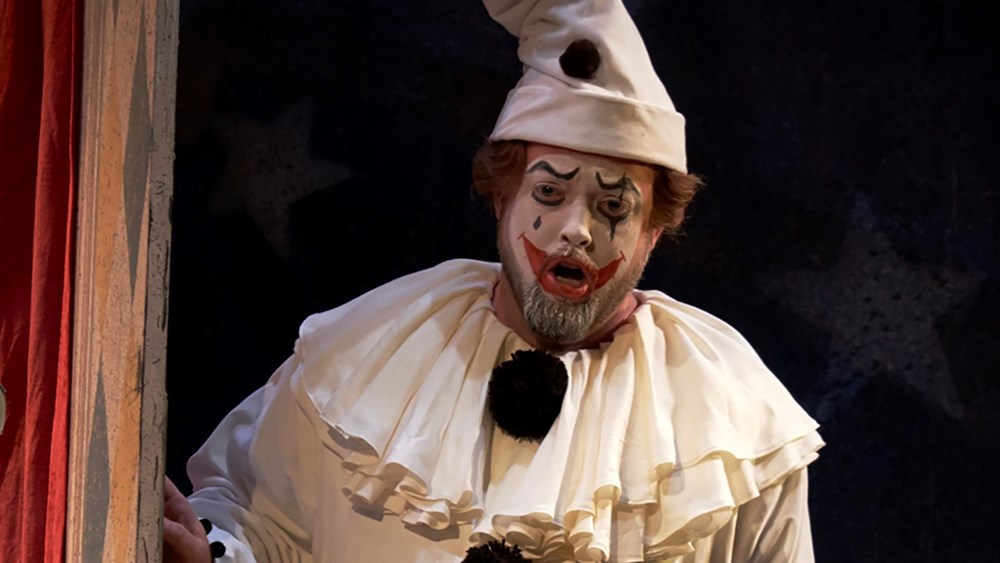
“There’s so much competition for our eyes and ears,” says Ethan Heard, co-founder of Heartbeat Opera, explaining his company’s stripped-down versions of the classics. “The whole world is saturated with content. People have less patience. It’s a reality that audiences are attention-less; we believe in cultivating their attention.”
“Every time I bring friends to see shows, the first thing they ask is, ‘How long is it?’” says producer Beth Morrison. “We live in a fast-paced media world. We’re used to multitasking, so concentrating on something for more than an hour and a half isn’t easy to do anymore.” Morrison’s under-90-minute offerings include Paul’s Case, David T. Little’s Soldier Songs, David Lang and Mark Dion’s Anatomy Theater, and Du Yun and Vavrek’s Angel’s Bone.
“Some of my best experiences have been durational pieces, like [Philip Glass’ five-hour] Einstein on the Beach and Robert LePage’s Lipsynch, which lasted nine hours,” Morrison says. “But you make a choice to do something like that. There’s something to be said for seeing Parsifal, but you can’t do it every day.”
Nashville Opera first offered a standalone Pagliacci in 2003. “When you pair it with Cavalleria, that’s a lot of angst for one evening,” says John Hoomes, the company’s CEO and artistic director. “Some audience members, if they aren’t already versed in opera, don’t expect them to be paired. We have a younger and, thank god, a growing audience, and if we do a piece that stretches on for three hours or more, it makes for too long an evening. People comment on that.”
The Nashville staging inserted an intermission between Pagliacci’s two short acts. “Unlike Cavalleria, Pagliacci is constructed so well that it works as a two-act piece,” says Hoomes, who directed the production, which was revived in 2011 and has also been mounted at Lake George Opera and Alberta Opera. “Doing it this way, it feels like a full-length opera.
”Opera Ithaca’s decision to present Pagliacci on its own was hardly about saving the cost of mounting Cavalleria, according to Board President Barry Chester. “We were focusing on the one thing that would be most successful,” he says. “Nobody in the audience said, ‘Wait a minute, I’m not getting value for my money.’”
“Pagliacci gives you everything you want from an evening of opera,” says Ned Canty, general director of Opera Memphis, where in 2015 he staged the opera as a solo offering. “It’s all killer, no filler.”
As a way of fleshing out the evening, the company offered a “Neapolitan feast” in the theater lobby afterward, featuring food stalls, strolling minstrels and acrobats from the show. “It was a way to give people a fuller evening, if they didn’t have to get home to relieve the babysitter,” Canty says. Boston Lyric Opera will take a similar approach when it mounts its upcoming Pagliacci at a skating rink. Audience members will enter into a country fair, with circus performers and food trucks, before they’re invited into a circus tent for the opera itself. Opera Ithaca turned its own Pagliacci into a full-evening experience by staging the work at Circus Culture, a local circus school, using its acrobats and clowns along with the Cirque du Soleil juggler Sean Blue. The performances sold out, and the production was transferred to The Slipper Room in New York City.
The idea of embedding a relatively short musical offering within an immersive audience experience falls in line with the findings revealed in “Building Millennial Audiences: Barriers and Opportunities,” a 2017 report from the Wallace Foundation. The study of the cultural-consumption preferences of the under-40 set revealed that Millennials gravitate toward “complete experiences”: evenings that combine a performance with food, drinks and the chance of socializing. That finding falls in line with the conception for “The Angel’s Share,” a series of compact classical music programs — including a selection of composer Gregg Kallor’s vocal works and a Dido and Aeneas with Daniela Mack — given in the catacombs of Brooklyn’s Green-Wood Cemetery. The evenings start with cocktails at the cemetery’s main gate and then continue with a walk through the gravestones to the catacombs themselves before the performance starts.
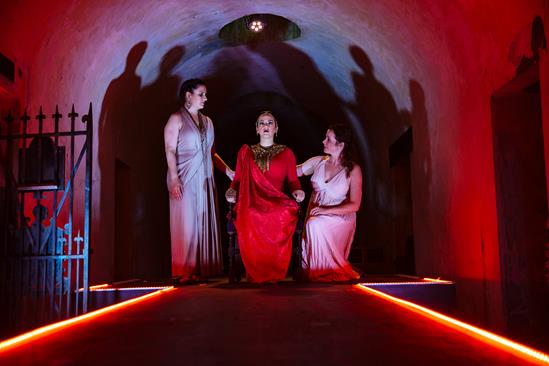
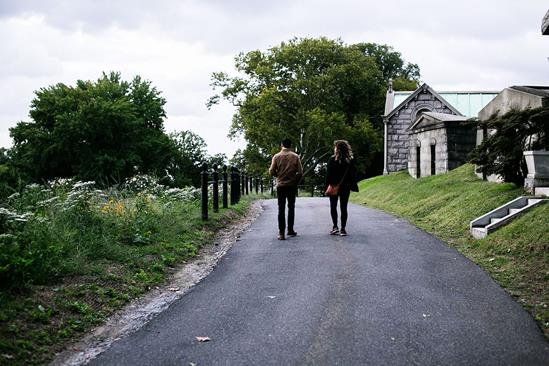
“It puts people in a mindset to experience the music,” says Andrew Ousley, the series’ producer. “The whiskey, the surroundings and the meditative walk through the cemetery help open people up — particularly people who don’t ordinarily come to classical concerts. Rather than giving them too much music, I want them to leave saying, ‘How do I get more of that?’ If people don’t care about classical music, I want to make them care.”
The lengths of Heartbeat Opera’s adaptations of works like Carmen, Madama Butterfly and Fidelio have arisen partly because of limitations in the company’s resources. “We have no orchestra, no time to rehearse anything longer than 90 minutes and a budget of about $50,000,” says company co-founder Louisa Proske. “Over time, the 90-minute format has become an aesthetic. We see ourselves as benign provocateurs. We aren’t looking to replace traditional presentations: It’s not an either/or. We want people to see our Carmen and then a traditional one and put them in conversation.”
Shorter new works, like the 60-minute Murasaki’s Moon, On Site Opera’s recent premiere, often have concision built into their very DNA. The Michi Wiancko/Deborah Brevoort work, portraying the 11th-century Japanese writer Murasaki Shikibu, was conceived for the Astor Court of New York’s Metropolitan Museum, developed (with support from an OA Opera Grant for Female Composers) in 13 months, and presented this May in six performances over two days. “The length was tailored to the space, the material and how many times we wanted to do it,” says Eric Einhorn, On Site Opera’s co-founder and the director of the show. “We couldn’t meet the cost of commissioning a full-length piece, and you can’t develop a full-length opera in a year. The piece depicted an ephemeral episode — a moment in Lady Murasaki’s life — so it was conceived as a flash of conflict and inspiration.”
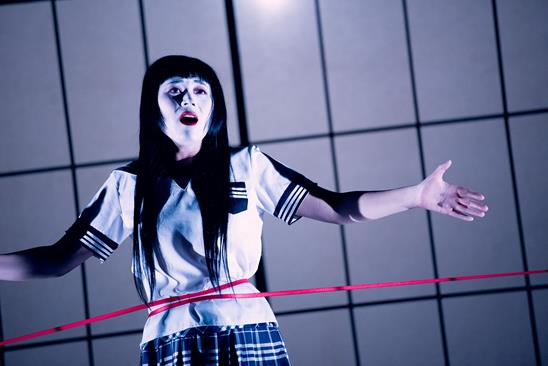
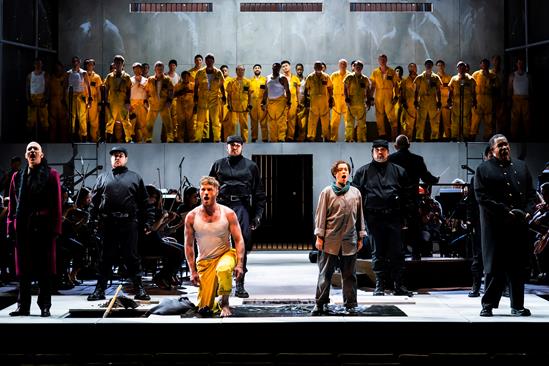
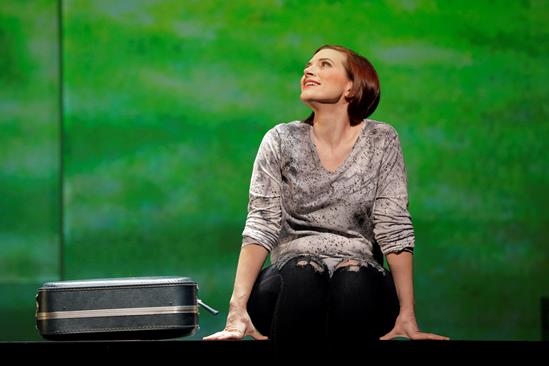
Like a “street fair” Pagliacci mounting, Murasaki’s Moon gave audiences the opportunity to watch an opera within a larger cultural experience — in this case, a visit to the museum’s storied collections. “You could tack other things onto the experience and see some art,” says Einhorn. “That’s something we can all fit into our very busy lives.”
Composer/librettist David Lang arrived at the 75-minute length of prisoner of the state, his adaptation of Fidelio, as a way of maximizing its impact. The work, which had its New York Philharmonic premiere in June, strips out the subplots and the happy ending of the Beethoven original to deliver an explicit statement about contemporary oppression. “Because I knew that I didn’t want a resolution at the end, I felt an obligation to have a shorter show, to have no intermission, to have no moment where the action let up,” Lang writes in an e-mail. “I wanted to keep the focus of the audience on the problem in front of us, but then it seemed unfair to say to listeners that they should stay three hours without an intermission. So 75 minutes seemed just right.”
As One, the most-performed of recent American operas, was conceived from the outset by composer Laura Kaminsky and librettists Mark Campbell and Kimberly Reed as a 75-minute, intermission-less piece. “I don’t like the break in energy that comes with an intermission,” Kaminsky says. “You leave the audience with a pregnant pause, then they get up, send text messages, have a drink, call their boyfriend or a babysitter. With a piece that’s 90 minutes or less, everything leads to the next thing. You’re captivated; then when it’s done, you get up and leave.”
“Given how complicated and demanding our lives are,” Kaminsky says, “these intense but shorter experiences resonate.”
This article was published in the Summer 2019 issue of Opera America Magazine.

Fred Cohn
Fred Cohn is the former editor of Opera America Magazine.


